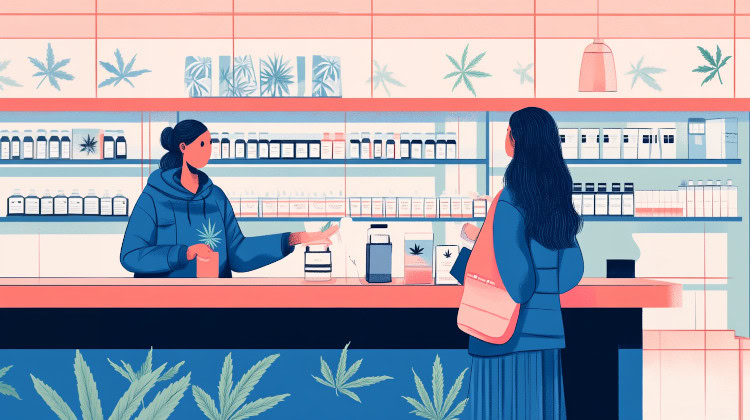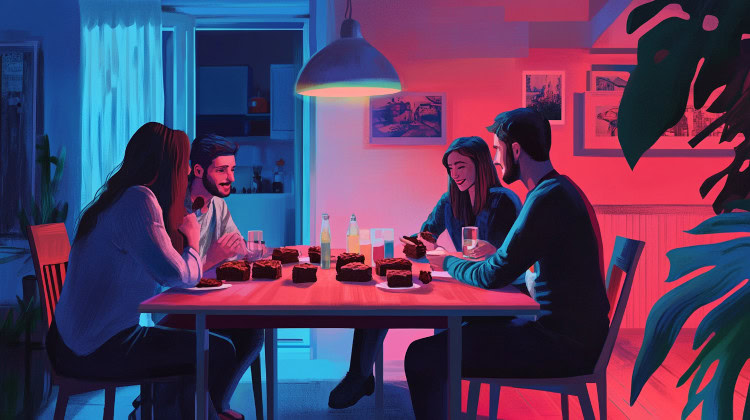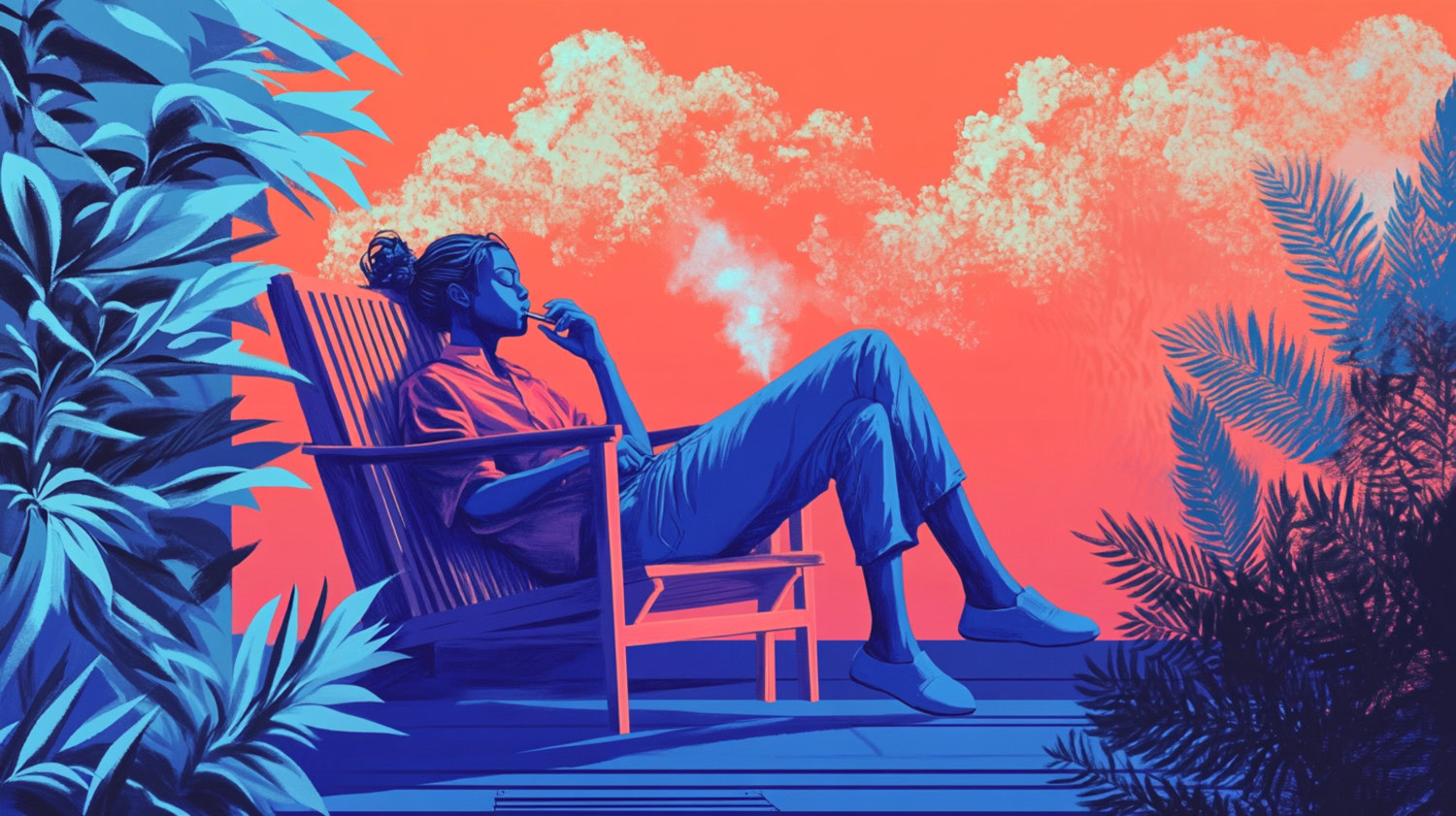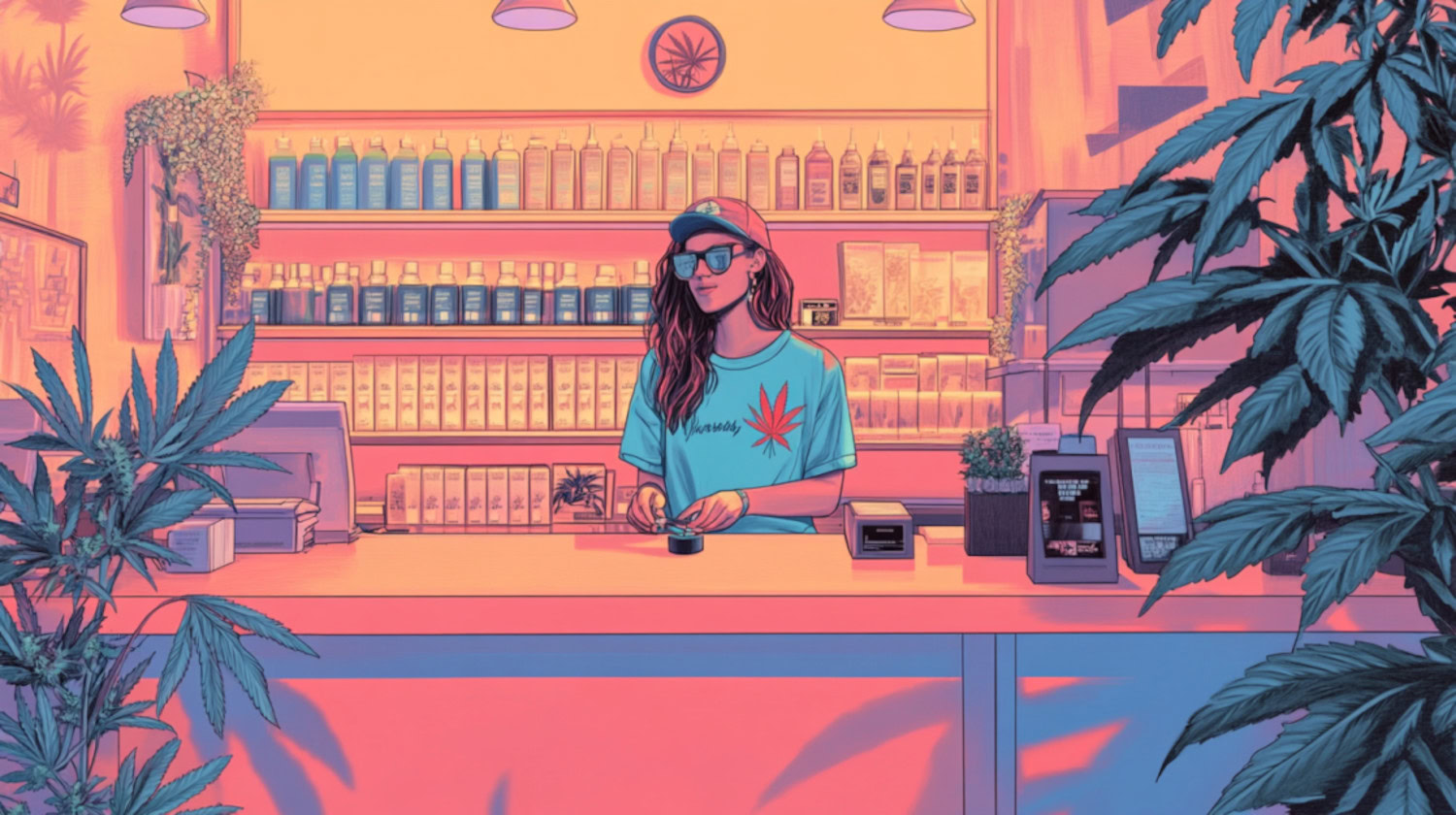In This Article
- Why Weed Isn’t the Same Every Time
- How Different Is Legal Cannabis From the Prohibition Days?
- How Consumption Method Affects the Experience
- Set, Setting & Biology: The Overlooked Factors
- Why Talking to a Medical Cannabis Doctor Can Help
- Tips to Have a Better Cannabis Experience (If You’re Ready)
- A Bad First Try Doesn’t Have to Be the Last
- References
Key Takeaways
- One bad cannabis experience might not mean cannabis isn’t for you.
- Dose, product type, and individual biology can make a big difference in each session.
- Modern options make cannabis less of a wild card and more of a choose-your-own-adventure.
Some consumers try cannabis once, have a bad experience, and never consume it again. Maybe it was an edible that hit too hard, a joint that triggered a headache, or an overwhelming social setting. Whatever the reason, one bad moment can easily shape the way a person sees cannabis usage for the rest of their life.
But over the years, cannabis has changed, and so have the ways people use it. With more education, extensive product options, and personalized consumption guidance, that last experience might not be the same if you decide to try again.
As a disclaimer: This article is written for those who had one or two disappointing first experiences with cannabis. Maybe the result was getting too high or simply not feeling what was expected. This article is not intended for individuals who experience panic, paranoia, or ongoing sensitivity when using cannabis. If cannabis has made you feel uncomfortable or has been harmful to your health, it may not be a good fit, and that’s okay.
Why Weed Isn’t the Same Every Time
Cannabis isn’t a one-size-fits-all experience.
The effects can change based on the product, dose, environment, and individual biology. According to research published in Addictive Behaviors, about one in four people process THC differently. Their genetic variation slows the breakdown of THC. This may lead to stronger or longer-lasting effects than expected.
In short, your first experience might’ve felt too intense. Your next one might feel completely different. Several factors can influence the experience, including dosage, product type, metabolism, tolerance, and social setting.
There are a couple of key points that cannabis experts and enthusiasts have integrated into their consumption habits. They often keep in mind:
Dosage matters. Even a small shift in milligrams can change the entire experience. Some resources can help you understand how different THC amounts might feel.
Terpenes matter. These aromatic compounds shape flavor, aroma, and sometimes, even mood. For example:
- Limonene might stimulate an uplifted, refreshing experience.
- Myrcene may promote calm or relaxation in the body.
- Pinene might make one feel alert and is often associated with mental clarity.
These subtle but important details can completely change how cannabis is experienced.
How Different Is Legal Cannabis From the Prohibition Days?

If your first experience with cannabis happened before legalization (or outside of a licensed dispensary), there’s a good chance the product wasn’t labeled, tested, or consistent.
Consuming cannabis without knowing any of these details can shape how it is experienced, similar to blind tasting food or beverages. Modern dispensary-distributed cannabis comes packaged and labeled with more information like THC percentage, ingredient lists, and package dates.
It’s also sold in many different forms: precisely dosed edibles and infused drinks, potent oils, vape pens, even variously scented topicals, and more.
But of course, even more than those changes. Research shows that average THC levels have increased significantly over the last few decades. Between 1995 and 2014, THC concentration in cannabis flower tripled from around 4% to over 12% on average.1 Today, some products can reach 20 to 30% THC or higher.
If your first experience happened before the 1990s, today’s products may offer something different. With extensive product options in dispensaries and guided consultations with a knowledgeable budtender, you may be better able to choose a consumption method, dosage, or product that suits your desired effects.
How Consumption Method Affects the Experience
Not all cannabis products feel the same. How you consume them can shape everything from how fast the effects kick in to how long they last. Different consumption types vary in onset time, duration, and labeled dosage.
Inhaled products, like vapes or flower, tend to act faster but fade sooner. This makes it easier to ease into their dose and adjust as needed. According to current research, vaping may produce fewer combustion byproducts than smoking.
If you’re trying inhaled cannabis again, start with one small puff of the joint or vape, or ‘hit’ from a bong or dab rig. You may feel effects within a few brief moments, which may last for a few minutes up to a few hours.
Some patients who have had an unpleasant experience with smoking might want to explore non-smoking options when trying cannabis again. However, it’s important to remember that edibles are processed through the liver, where THC is converted into a compound called 11-hydroxy-THC.2 This version of THC may feel stronger or more intense. It's why edibles can sometimes catch people off guard, especially without knowing how much is in them or how long they take to kick in.
When consuming edibles, start with the lowest dose you're comfortable with and wait a few hours for the onset of effects. The duration of the effects may last several hours.
Other non-inhaled formats, like tinctures, drinks, or tablets, may offer more control and a slower buildup. Their onset time and duration of effects is similar to traditional edibles.
Set, Setting & Biology: The Overlooked Factors

Even with the right product and dose, cannabis can still feel unpredictable, especially the first time around. But often, it’s not just about what you took. It’s also about when, where, and how you took it.
Set refers to your mindset going in. Anxiety, stress, or pressure to feel a certain way can all shape the experience.
Setting includes your environment; whether you're around strangers, in a loud space, or somewhere you don’t feel fully at ease. It’s common for early bad experiences to happen in places that don’t feel safe or calm.
Your biology plays a role, too. Metabolism, hydration, hormone cycles, and even what you’ve eaten can affect how cannabis feels. The same dose might hit harder or softer depending on the day.
Terpenes add another layer. These natural compounds help shape aroma and may influence how certain strains feel. For example:
- β-Myrcene is often linked to body heaviness or sedation, helping with the "couch-lock" effect of some strains.
- Limonene may make one feel brighter or more energized.
- β-Caryophyllene interacts with the body's CB2 receptors and is being studied for its calming potential.
- Pinene is sometimes described as providing a more mentally clear or alert vibe.
The elements of set, setting, and biology work together. Small changes in one of these areas may be all it takes to have a completely different experience the second time around.
Why Talking to a Medical Cannabis Doctor Can Help
If your first experience with cannabis didn’t go well, it’s valid to feel hesitant about trying again. One way to reduce that uncertainty is by speaking with a medical cannabis doctor.
These professionals don’t just issue medical cards. They can potentially help patients understand how cannabis may fit into their overall wellness goals. That includes discussing past experiences, identifying potential triggers, and offering insight into different product types, potencies, and formats.
This guidance may reduce guesswork and provide more confidence when navigating dispensary menus. Having the right support can make a difference when giving cannabis a second chance.
If you’re interested in medical cannabis cards, there are pros and cons to getting one, and laws vary depending on the state. Learn how to find a cannabis doctor nearest to you.
Tips to Have a Better Cannabis Experience (If You’re Ready)

Trying cannabis again can feel like a big step. With a few thoughtful choices, it may go differently than it did the first time.
Start with the right setting. Choose a calm, familiar environment where you feel safe and unrushed.
Begin with a low dose. A "low dose" is subjective and varies by patient. Start with the smallest amount possible, wait, and observe before adjusting.
Give it time. Effects can take a while to kick in, especially with non-inhaled products. Patience can prevent overdoing it.
Consider low-THC, high-CBD options. Some patients prefer products with a more balanced or mellow profile.
Avoid mixing with alcohol. Combining the two can amplify effects and increase discomfort for some people.
Ask questions at the dispensary. Knowing how to talk to your budtender can help you feel more confident.
Choose your shop carefully. Finding a licensed, patient-friendly dispensary can make a huge difference.
There’s also no rush. The right time and the right approach look different for everyone.
A Bad First Try Doesn’t Have to Be the Last
Plenty of people have a rough first experience with cannabis. It’s more common than some might think.
But with today’s wider range of products, better education, and access to medical guidance, trying again can look very different, if and when you're ready.
There’s no pressure to return to cannabis. But if you’ve ever been curious about giving it another chance, you might find the experience feels nothing like the first time.
References
- ElSohly MA, Mehmedic Z, Foster S, Gon C, Chandra S, Church JC. Changes in Cannabis Potency Over the Last 2 Decades (1995–2014): Analysis of Current Data in the United States. Biological Psychiatry. 2016;79(7):613-619. doi:https://doi.org/10.1016/j.biopsych.2016.01.004 ↩︎
- Barrus DG, Capogrossi KL, Cates SC, et al. Tasty THC: Promises and Challenges of Cannabis Edibles. Methods Rep RTI Press. 2016;2016:10.3768/rtipress.2016.op.0035.1611. doi:10.3768/rtipress.2016.op.0035.1611 ↩︎
The information in this article and any included images or charts are for educational purposes only. This information is neither a substitute for, nor does it replace, professional legal advice or medical advice, diagnosis, or treatment. If you have any concerns or questions about laws, regulations, or your health, you should always consult with an attorney, physician or other licensed professional.




